Rings, an ID card for birds
While we have a national registry number on our ID card, some birds have a metal ring with a number. It was the Dane Hans Christian Cornelius Mortensen who started putting rings on birds. He started doing this on a group of hundred starlings to see which places they visited. In the following years, the technique became increasingly popular. Nowadays, ringing birds is still one of the most used techniques for research on bird life.
A bird ring functions similarly to our ID card. It carries a code that works like a national registry number, often along with an identifier for the specific location where the bird was ringed. One downside of metal rings is that the bird must be recaptured to trace its origin. Plastic color rings are commonly used as a solution since they are easier to read in the field. Typically, specific color combinations correspond to particular scientific projects. If you spot a bird with color rings, you can look up the associated project at https://cr-birding.org and report the bird. Reporting sightings of ringed birds provides scientists with valuable data—and you can help with it!
To ring birds, scientist uses so-called mist nets. These nets are made of fine mesh that is hardly visible to birds. A ringer regularly checks these nets and then takes the captured birds for ringing and some measurements (wing/tail length, weight,…) to the station. The measurements happen very fast to reduce the stress for the birds.
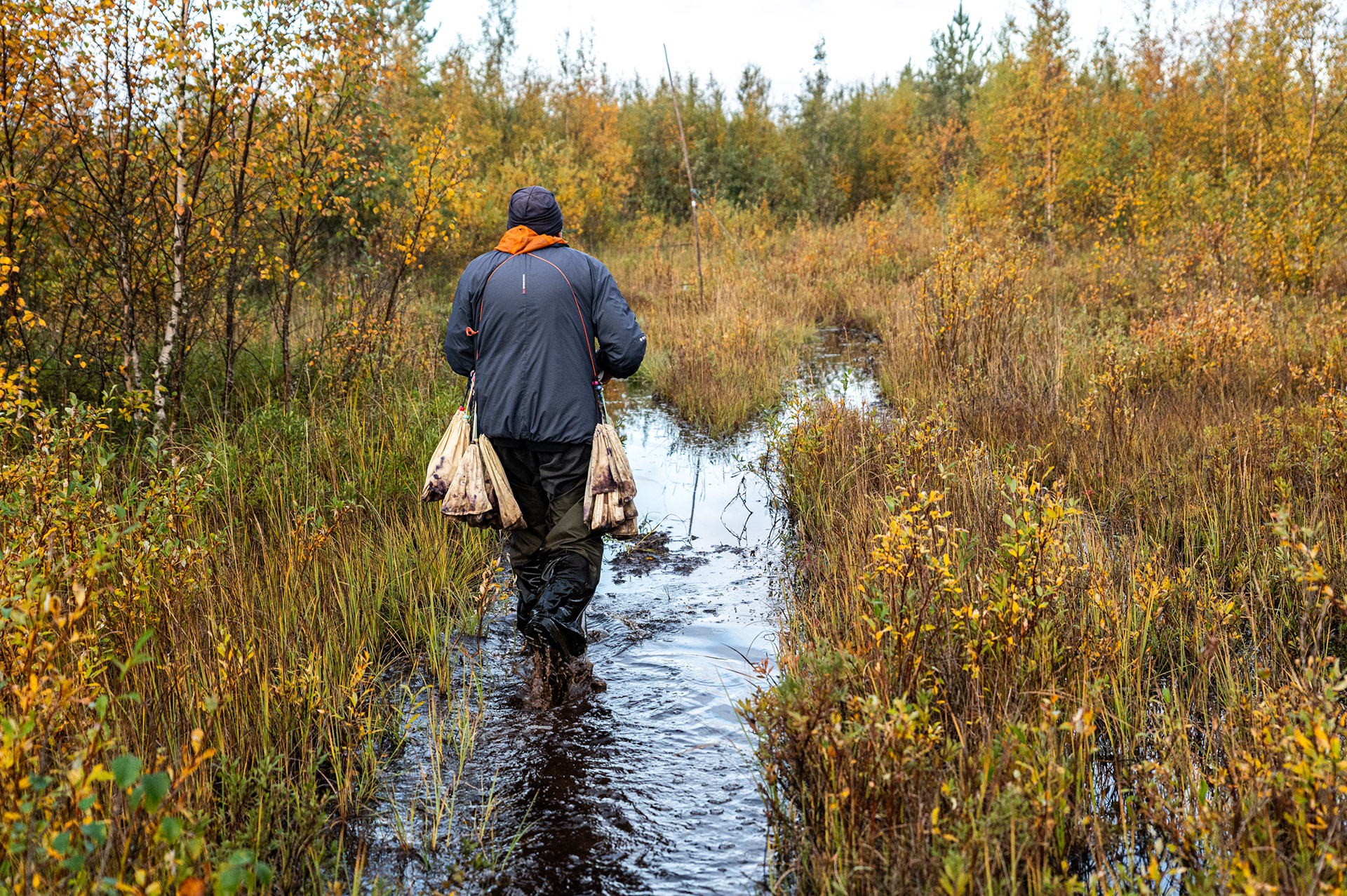
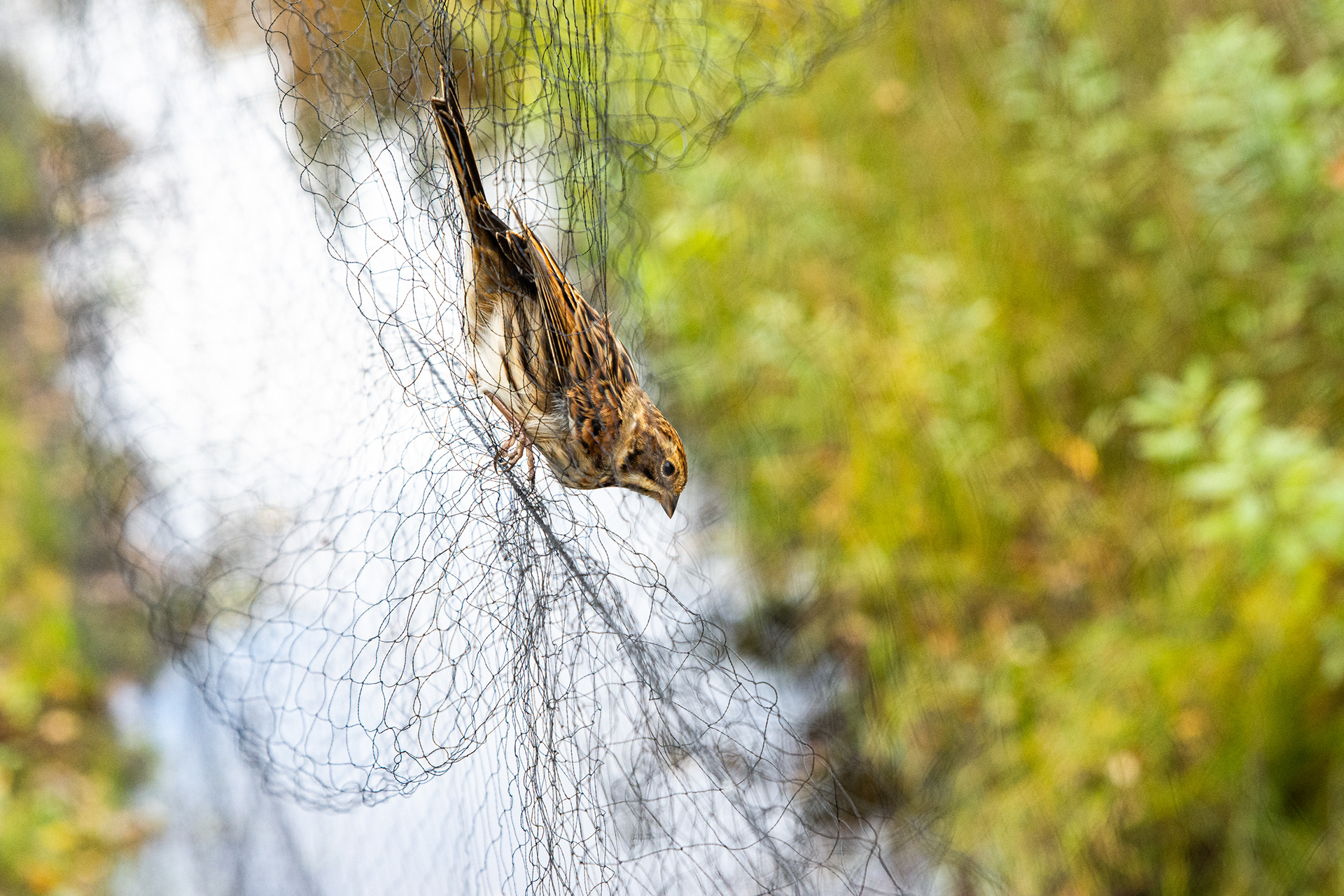
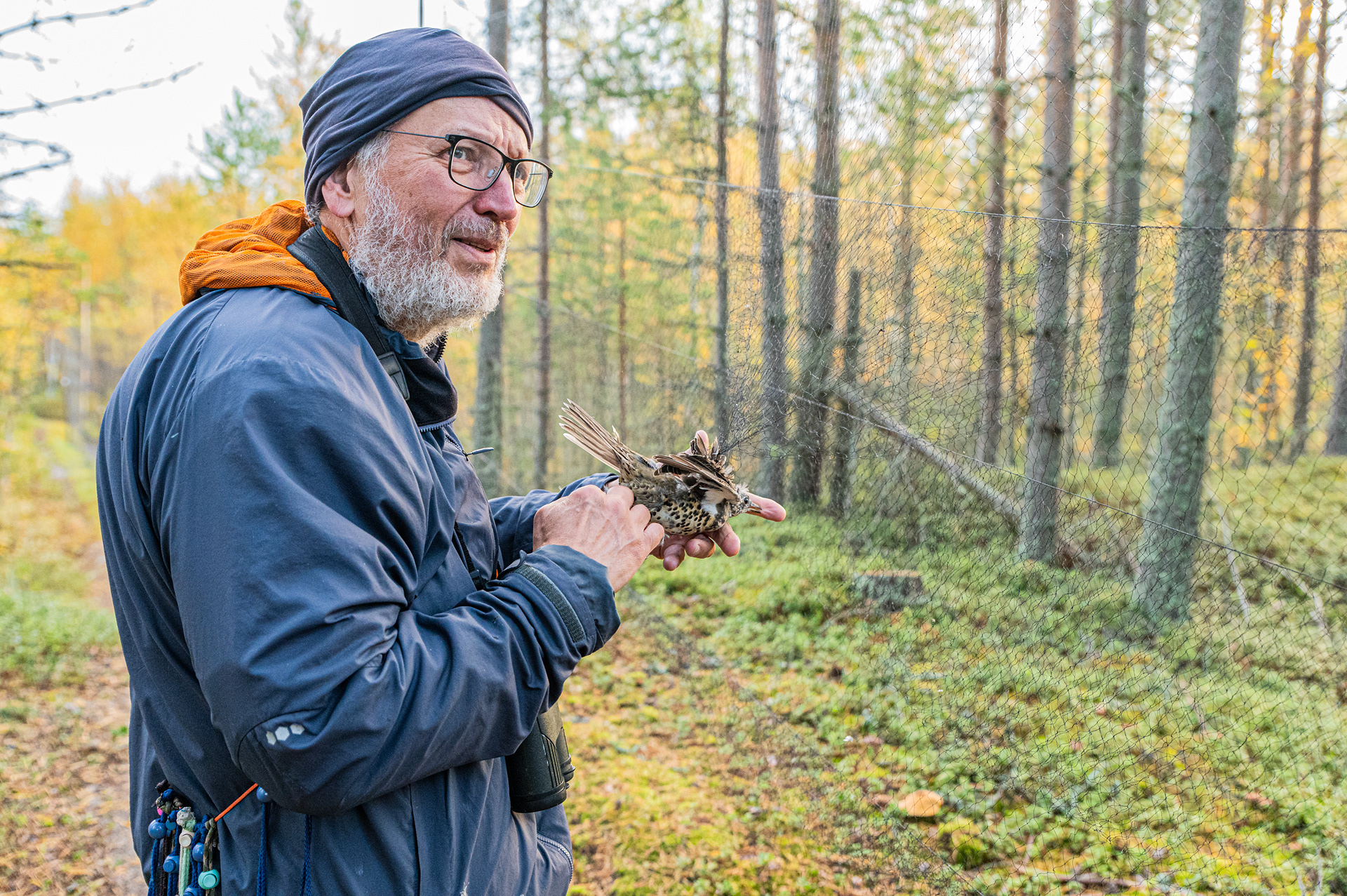
Matti Tynjälä has been ringing birds in Tauvo since 1976. He started ringing in 1974 as part of his thesis. He couldn't let go of bird ringing ever since. It's a passion, and it is difficult to express in words why he keeps on doing it. Every spring or autumn, he starts ringing again, no matter how difficult and frustrating it can be at some times. For example, he often had to re-hang nets because Moose had walked through them and destroyed them. Ringing birds in Tauvo just remains a high-class nature experience!
As I mentioned earlier, many scientific questions can be solved by ringing birds. How do birds migrate from their breeding grounds to their wintering ground? Which areas are important for these migratory birds? Which bird species are declining or expanding their range?
Matti especially notes a decline in species such as willow tit and red-backed shrike. Other species, such as blue tit or even red-flancked bluetail expand their range. The causes differ, but the story of the willow tit is interesting as this decline seems to be related to the increase of the blue tit and great tit. The latter two seem to be expanding their habitat thanks to climate change. The winters are becoming less harsh, and therefore, the survival of Great and Blue tits increases.
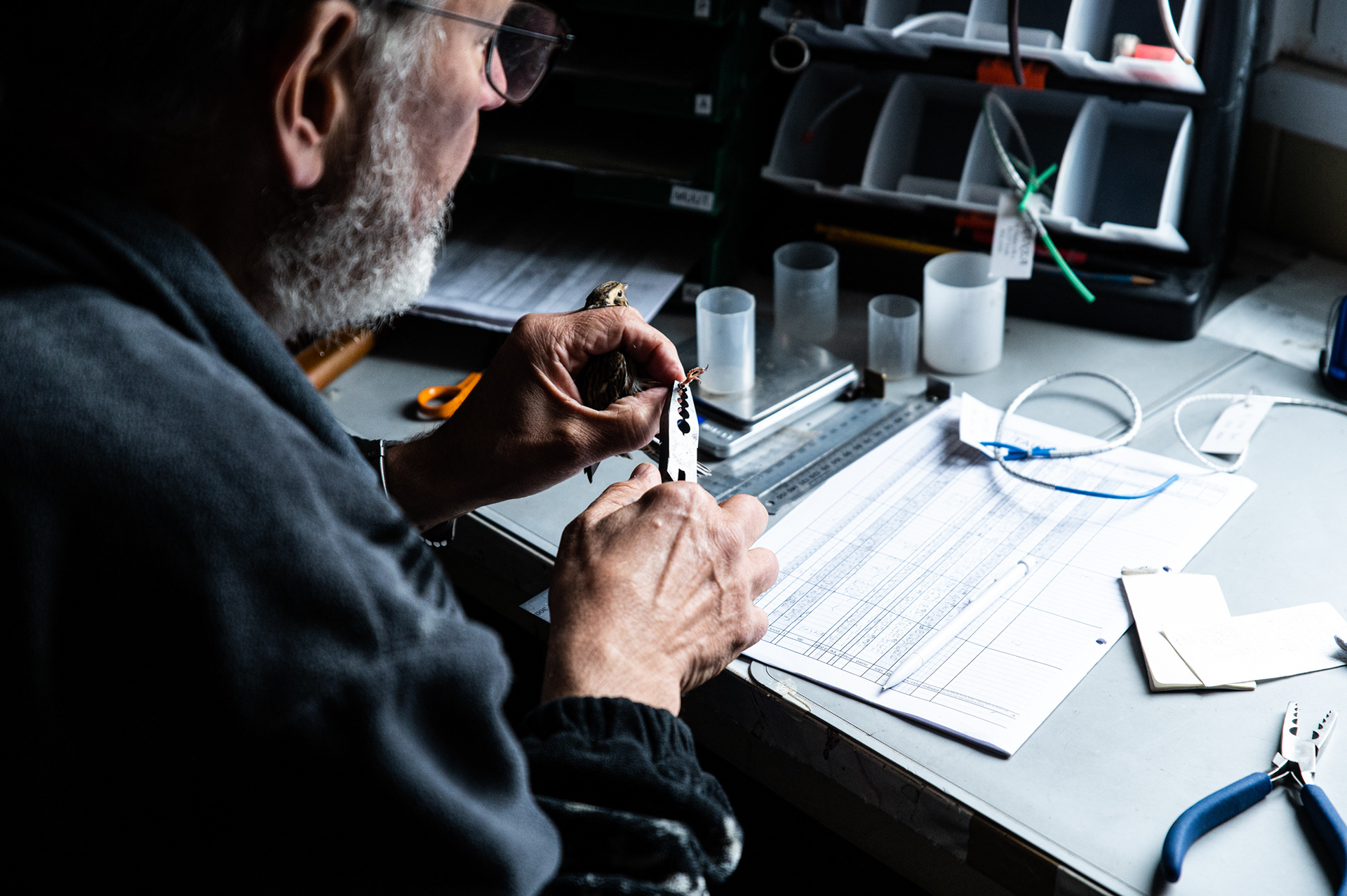
Matti rings carefully a rustic bunting.
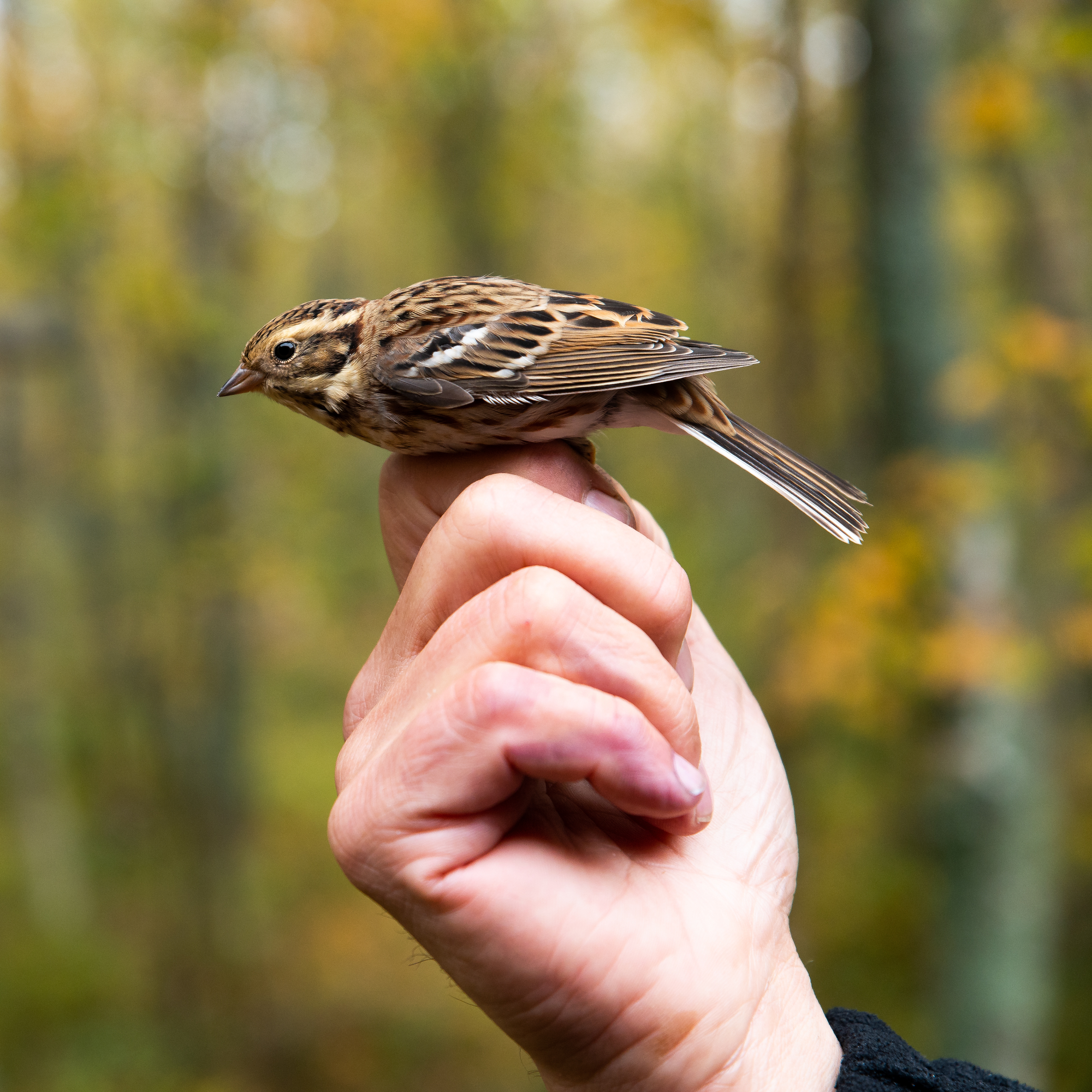
Rustic bunting, note the white stripe on the "shoulder"
At night, Matti sometimes rings owls. This mainly concerns tengmalm's owl (Aegolius funereus) and, to a lesser extent, the pygmy owl (Glaucidium passerinum). We also hoped for northern hawk owls (Surnia ulula) since this species invaded the west coast of Finland.
In total eight Tengmalm's owls were caught and provided with a metal ring. This owl species can travel considerable distances when food is scarce. There are recaptures from as far as southern Norway.
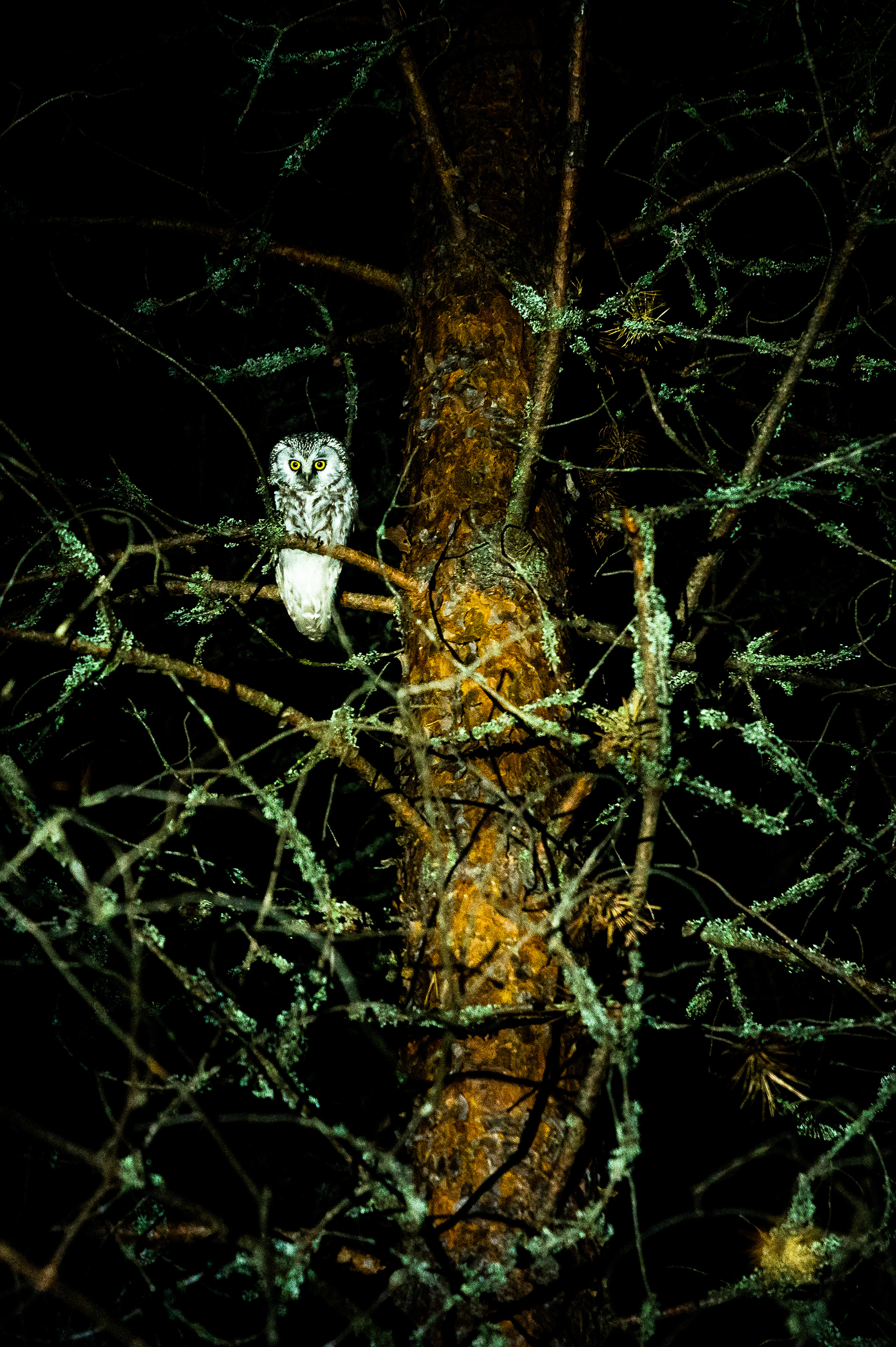
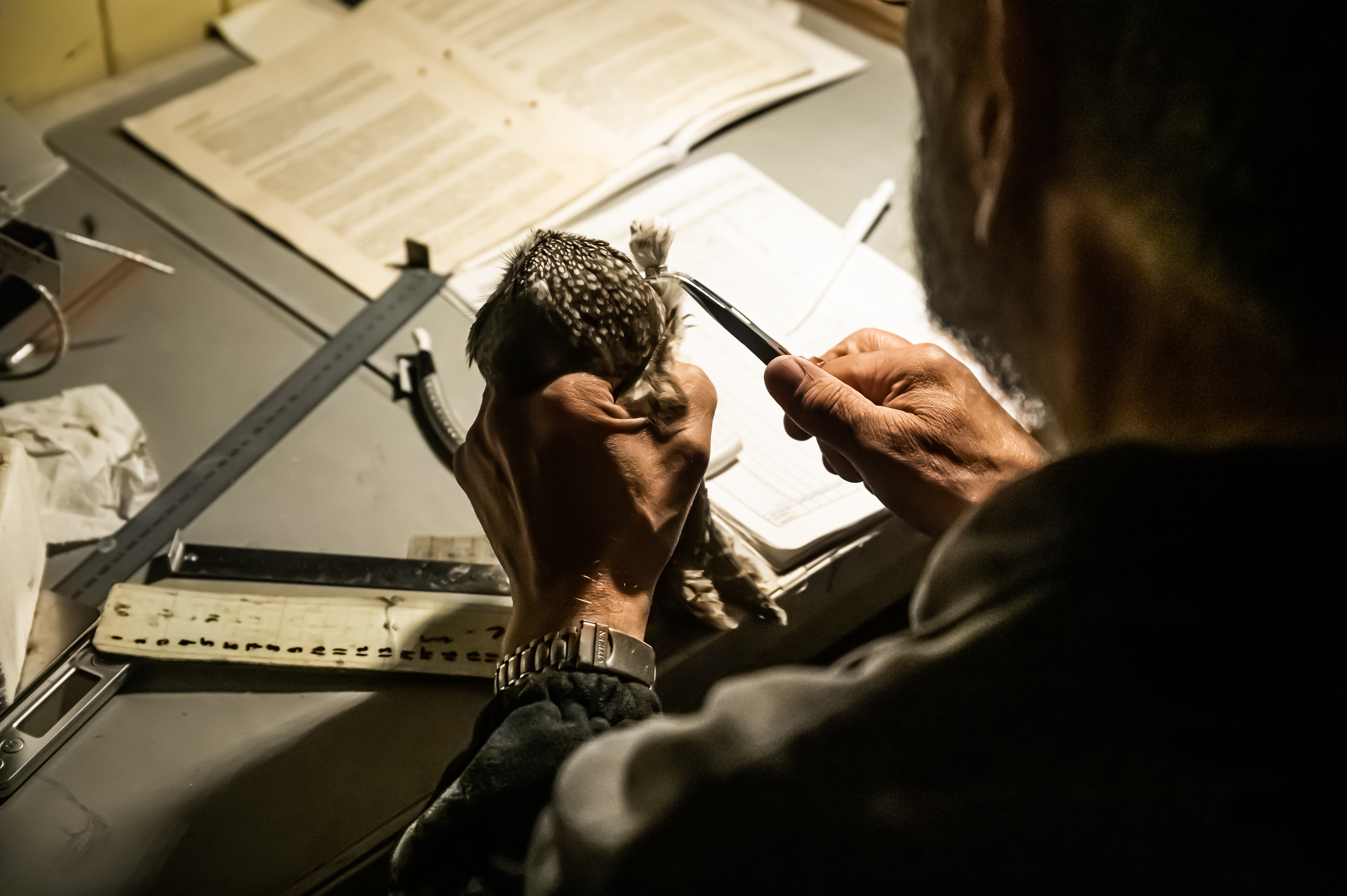
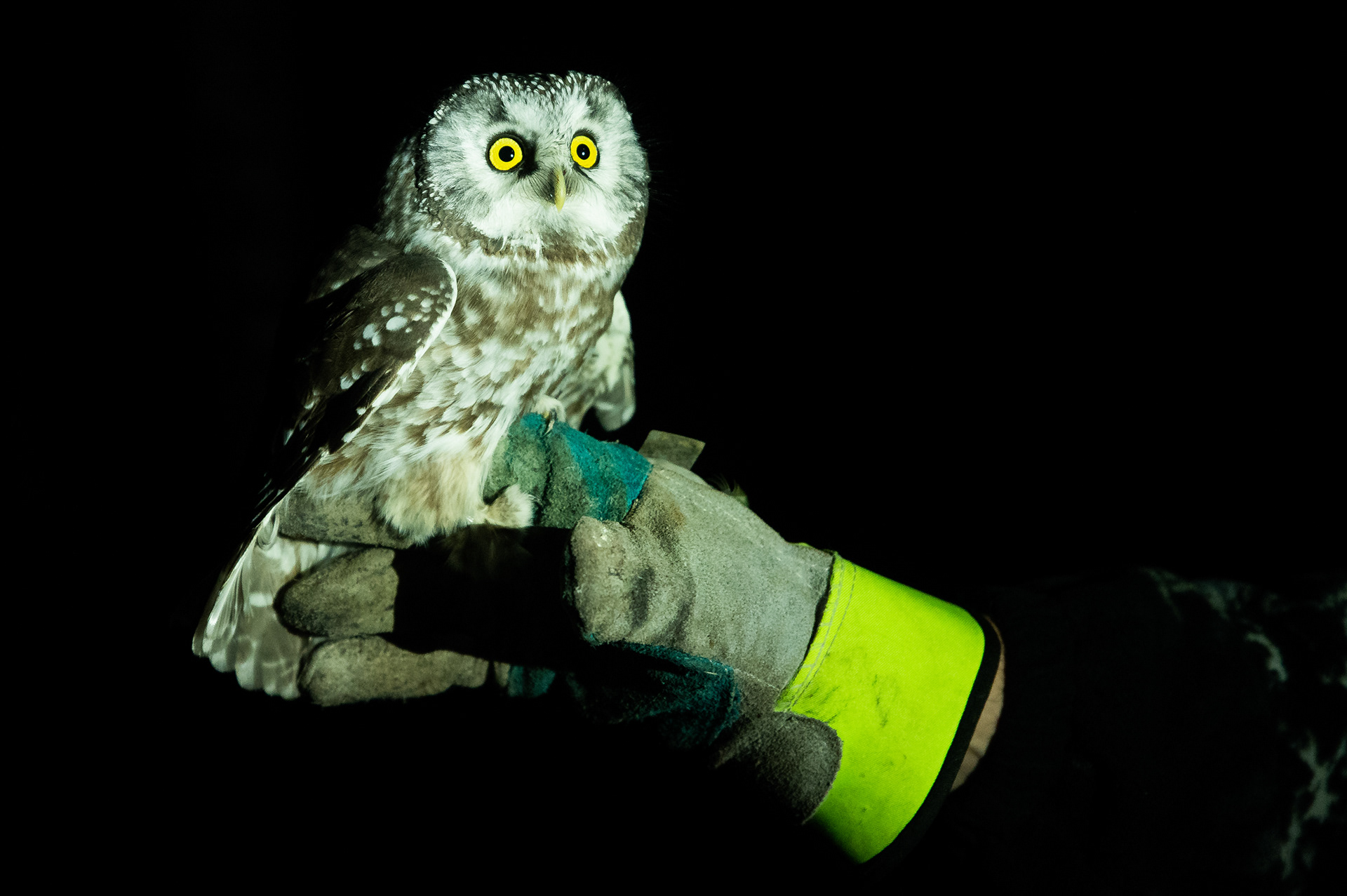
Wetlands, the McDonalds for birds
The bird ring station of Tauvo is located on the edge of a huge wetland called Ulkonokanhietikka. The are consists of birch groves, coastal grasslands, and some old dune complexes.
It sounds unlikely, but land emerging for the sea here! In the past, during the ice ages, a thick pack of heavy ice pressed covered the entire region. Since these ice caps have melted, the pressure on the land has disappeared and the land is rising about 8mm per year. As a result, numerous small islands emerge off the coast. You can also see the consequences of this in Tauvo. For example, when Matti started working here, he could still see the bare sandy beaches next to the ringing station. Because of land uplift and succession, the dunes are gradually becoming overgrown. Over the years, Matti saw the area becoming more and more forested. Letting cows graze in the fields is hoped to prevent further succession. More measures are certainly needed as, in some cases, grazing seems to help little. Another option that is being tried is to mow the grasslands once or twice a year with large machines.
View from the tower at the ringing station. Here you can see how the landscape changes from coastal mud flats to coastal grassland to birch groves with even pine trees here and there. Cows graze on the coastal meadows, but this does not seem to stop the succession.
A wetland is a true eldorado for birds. In the summer, species such as dunlin, redshank, and numerous other wader or duck species breed here. During the migration periods (August - September and May-June) many birds enjoy a stopover on the mud flats and stock up their bellies. I was a bit too late to experience peak migration. Nevertheless, I could still see some golden plovers, wood sandpipers, ringed plovers, and a little stint. Whooper swans and ducks gathered en masse in the bay before leaving for the warm south. Ducks also use this place to molt in late summer. They change plumage and are therefore more vulnerable during that period. White-tailed eagles (I saw no less than four individuals in one moment) try to take advantage of this situation and score a tender bite. A hundred cranes graced the whole scene with their beautiful sound, heralding that they were leaving for the south.
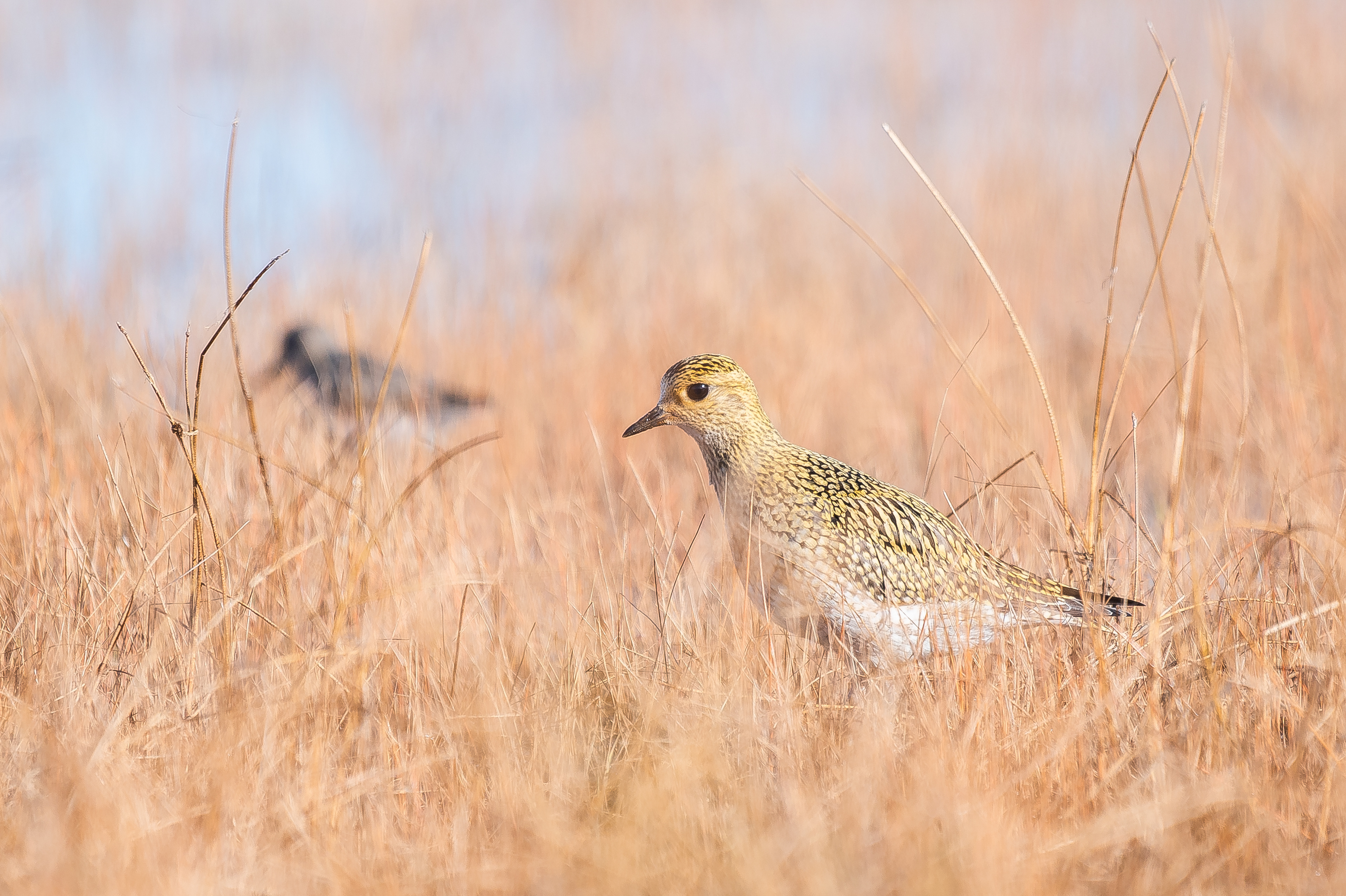
A golden plover in winter plumage. The orgin of the name is clear, I guess?
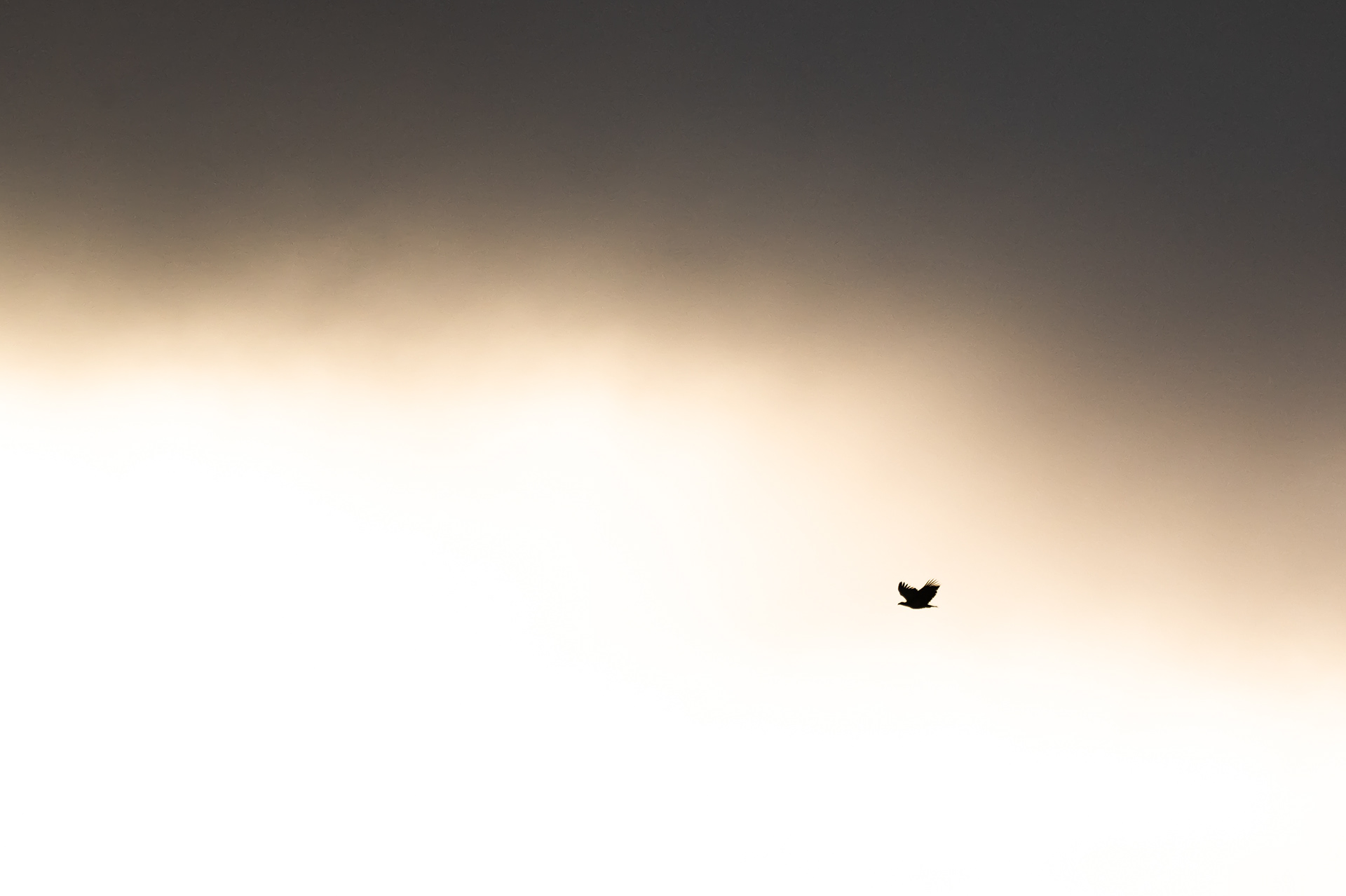
The menacing silhouette of the white-tailed eagle
The luxury of sleeping outside on a tower
Even though we had a super cozy building (including a sauna!), I chose to sleep outside. I have to admit, the nights were quite cold. Hopefully, my new sleeping bag (comfort -15°C) will help me a bit better with keeping warm next time in even colder adventures. The way I woke up was definitely worth the cold. Around 7 am, a group of whooper swans flew (and called loudly) right above my sleepy head. This was the signal to get up, full of energy, and enjoy the breathtaking landscape.
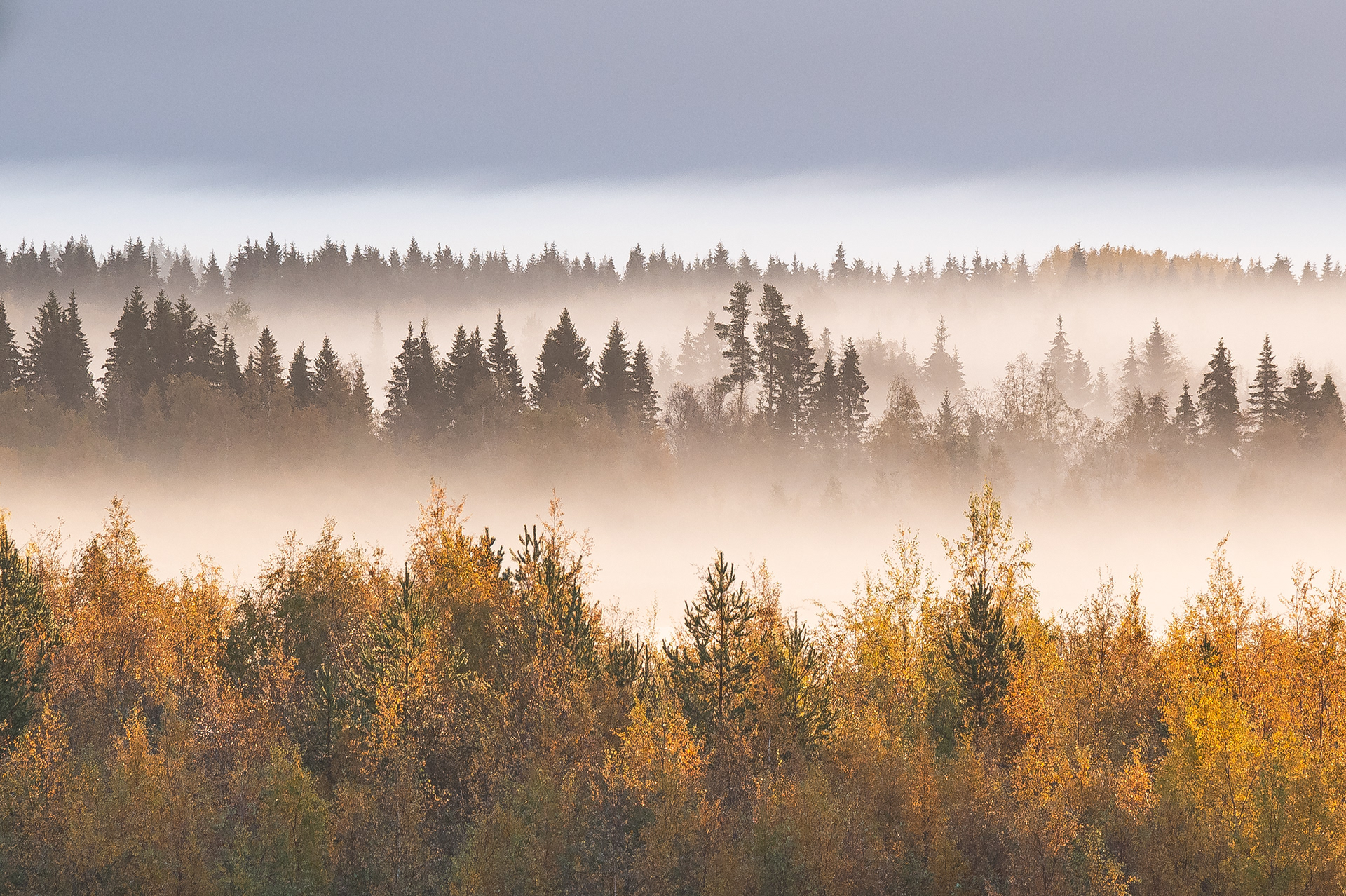
Landscapes like these give you more energy than three cups of coffee, believe me.
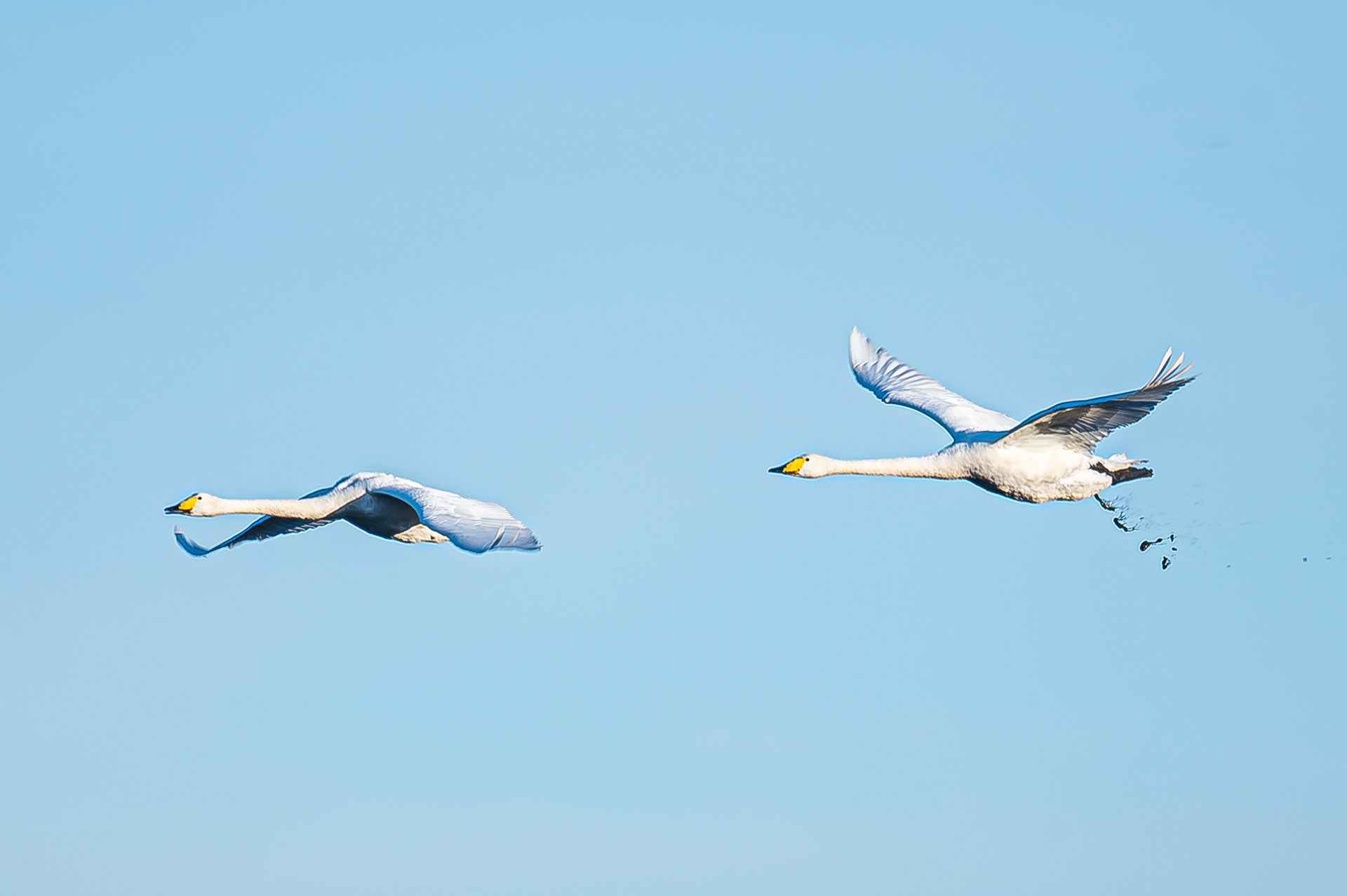
The lighter the better ;)
I started looking for birds with two French Erasmus students. We wanted to see a black grouse on top of a tree or, even better, an owl! The morning kicked off beautifully with a glimpse of a great gray shrike. This bird was likely on the lookout for a snack caught in the mist nets. Yes, great gray shrikes like a tasty meaty bite!
We couldn't find a black grouse, although we could hear their characteristic bubbling display sound in the distance. After some time checking tree tops, I got goosebumps. I had found my very own hawk owl! No one else was on the tower. I shouted the names of the other birders, but no one came. I hoped someone would check WhatsApp soon.
About 5 minutes later, I heard a door close with a bang. The two Frenchmen ran up the tower. You should know that the wood was rotting here, so I was a little scared since the tower was moving. Luckily, the owl stayed perched on the treetop so we could admire it for quite some time. The owl was sitting too far for a proper picture, but this phone picture gives a good impression of the atmosphere: Foggy, distant, and mysterious. The fog further moved inland. What a fairytale landscape. What a way to start the day!
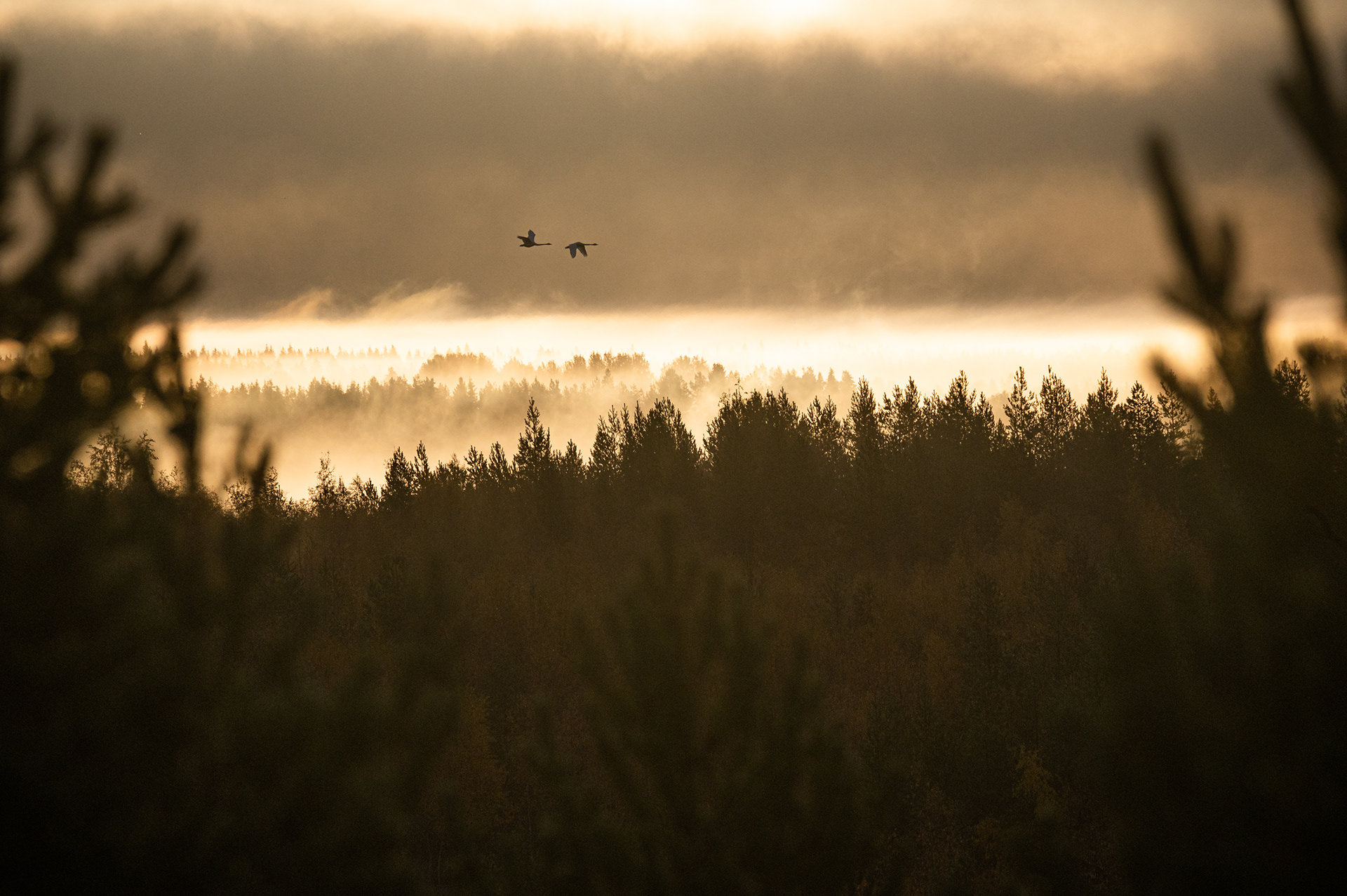
This picture summarises the ultimate nature experience for me. Waking up because of the rising sun and bird sounds!

Hawk owl through the scope!
I could image a better way to start my Erasmus exchange than by taking new friends to a place like this. Some new friendships were forged here. In addition my interested into bird research became more stimulated.
References:
With the help of Matti Tynjälä